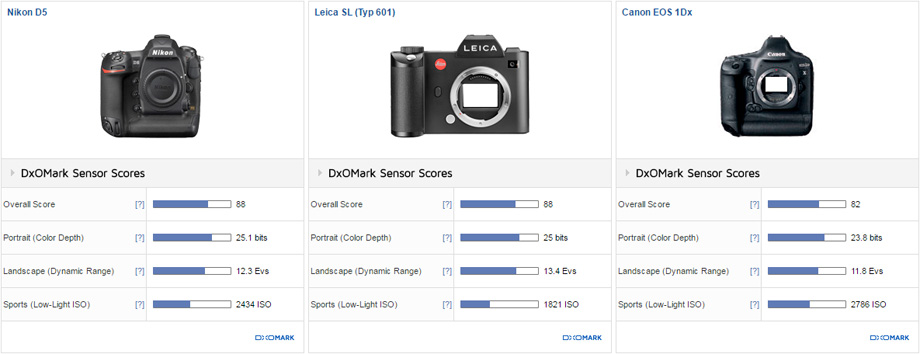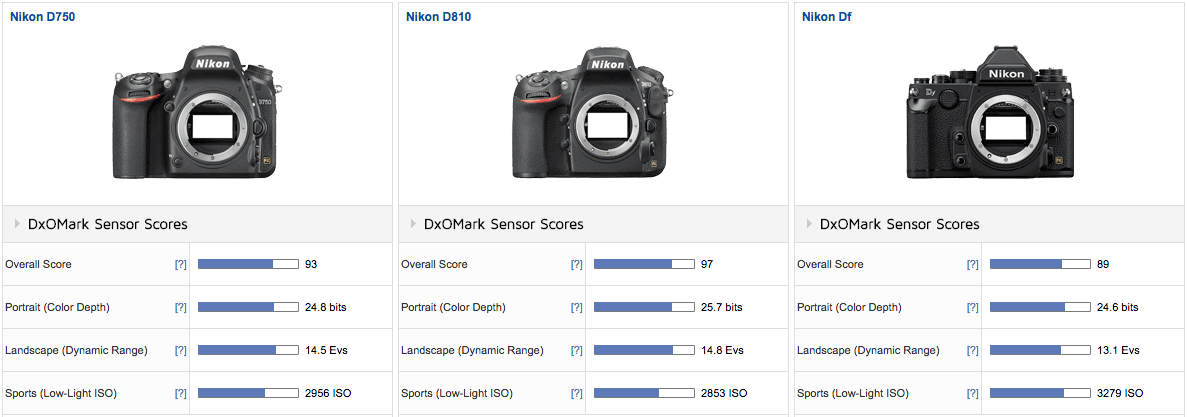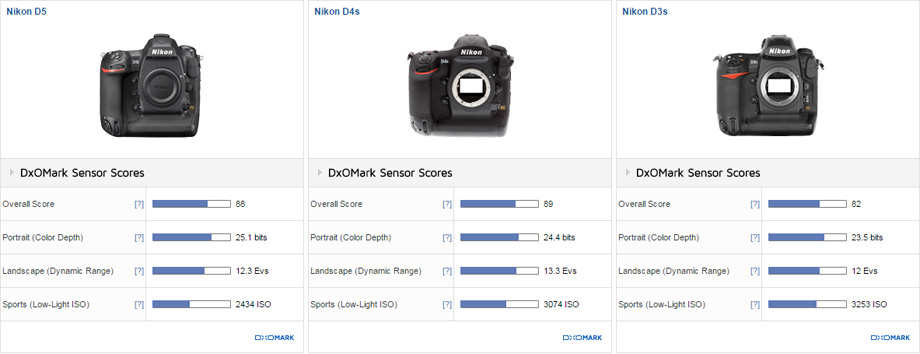DxOMark published their test results for the Nikon D5 camera:

For reference, here are the test results of the Nikon D750, D810 and Df cameras – the Nikon Df remains the “Lord of Darkness”:

The compassion with the older D4s and D3s models is even more interesting:
Against its predecessor, the 16-Mpix Nikon D4s, the new model’s sensor has superior color sensitivity at base (ISO 100) and it’s higher than the earlier 12-Mpix D3s — though in fairness, the latter model’s base was restricted to ISO 200. At around ISO 800, all three models share a similar result. In terms of dynamic range, both the D4s and D3s perform similarly where ISO settings overlap, at least up to ISO 3200. From there through ISO 12800, the D4s’s sensor has around a one-stop improvement. Similarly, the D5 sensor has a slightly wider dynamic range over the same sensitivity range and beyond to ISO 25600, but forfeits the D4s’s excellent dynamic range between base and ISO 400. Interestingly, the new model mostly replicates the D3s at low ISOs up to ISO 400, albeit with the added advantage of the lower native ISO setting. Despite the high color sensitivity that indicates lower noise levels, the Nikon D5 comes in at just over one-third stop behind the D4s in our low-light ISO score, and around a half-stop below the D3s. In real terms that’s not a great deal, considering its advantages elsewhere, and especially when compared to competing products.
Here is the overall ranking of Nikon DSLR cameras:
Moving from a 16-Mpix to a 20.8-Mpix sensor is quite significant for professionals, and the improvements in high ISO DR are useful in a camera like this. In terms of sensor resolution, the Nikon D5 now matches the admittedly aging Canon EOS 1Ds Mk II, a camera still widely used for magazine features (think double-page spreads) as well as commercial photography. While it’s true that models such as the Nikon D810 (and the Canon EOS 5DS and SR) are arguably more suited now for that kind of work, the Nikon D5 nonetheless represents a tipping point in all-around capability. With its excellent sensor performance, phenomenal AF system, impressive burst rate and durable build, the Nikon D5 is clearly optimized to appeal to those targeted by the company’s marketing department, yet its capabilities should also entice other kinds of photographers, whether they own a Nikon D810 or not.





